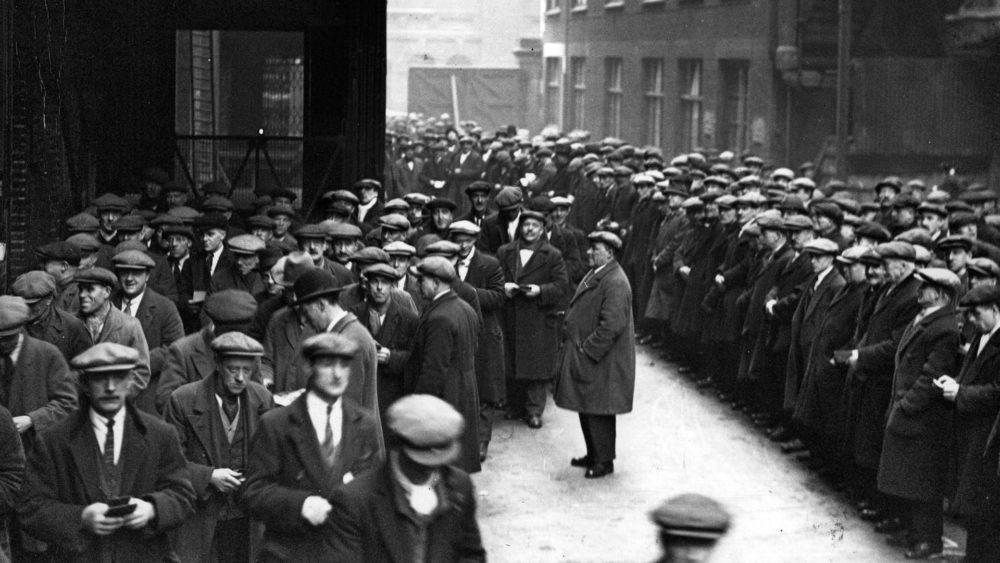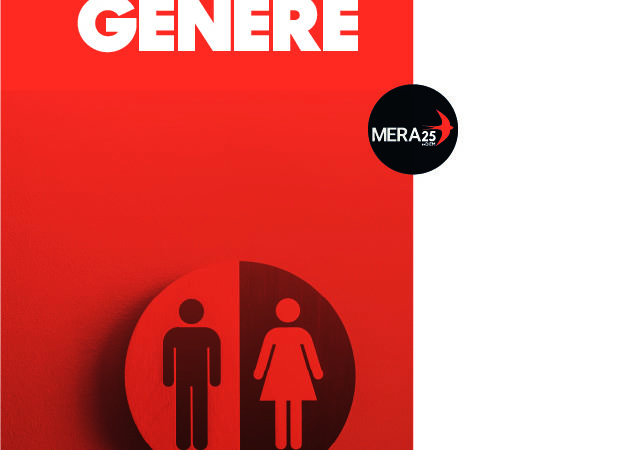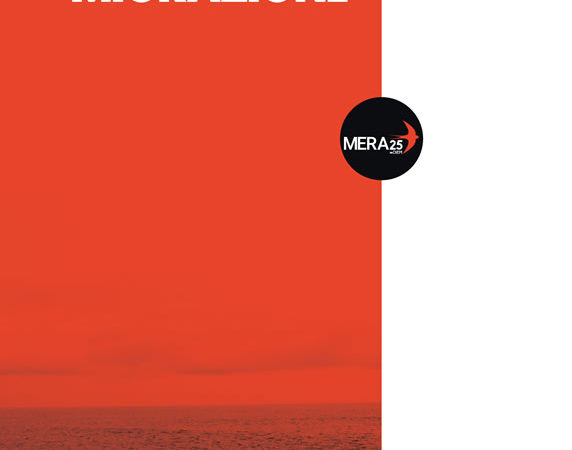The infamous “March of Independence” that took place in Warsaw on November 11, last year, has raised once again the question of whether we are living through a new version of the 1930s. While commentators, scholars and politicians are making extensive use of this historical analogy, its meaning remains ambiguous. It has been argued that progressives should drop it altogether, since it risks fostering a conservative interpretation of the current economic and political crisis, which identifies the threat posed to democratic societies as existing in the very demos itself.
However, the problem lies less in the analogy than in the way in which the latter is framed. Although it can be used to uphold technocratic policies, it can also serve democratic and progressive purposes. DiEM25’s proposals, such as our ambitious “European New Deal”, are precisely the living proof that the lessons from our dark past can be learnt and transformed into constructive resolutions for our future. Now, it is time to prepare for translating such resolutions into action, starting with the next EU parliamentary elections.
As widely reported by media outlets worldwide, tens of thousands of far-right nationalists and neo-fascists flooded the streets of Warsaw on Poland’s Independence Day. Demonstrators displayed old fascist symbols and chanted slogans such as “We want God”, “White Europe of brotherly nations”, “Remove Jewry from power”. Such a march is the clear sign that Europe is facing a serious threat posed by the growth of far-right movements, which has been so far downplayed, or outright ignored, both by the conservative and the liberal wings of the establishment.
Moreover, the rise of neofascism and far-right extremism cannot be discounted as a symptom of the immaturity of East European democracies, given that West European ones have proved not at all immune to the same menace. Since this surge is clearly related both to the “Great Recession” into which the world economy has sunk since 2007 and to the crisis that has been crippling the very foundations of modern liberal democracies in recent years, we are left to wonder whether “we are living through another 1930s”. If so, in which sense is this historical analogy correct?
Elite syncopations
DiEM25 is built precisely on the assumption that the steady disintegration of the European Union is threatening to push our continent back to those years. Such an analysis seems now commonplace, as commentators, scholars and politicians have started to make extensive use of it. It has been argued, for instance, that the election of Donald Trump has brought the USA into a “Weimar phase” in their history. However, as argued by Daniel Bessner and Udi Greenberg in the Jacobin Magazine, seeing our own predicament “through the lens of the Weimar Republic, then, comes with considerable peril”, since this might fuel élitist and technocratic responses, based on the assumption that “democracy’s survival depends on restricting the people’s power and on forming an unelected, bureaucratic elite shielded from public scrutiny”.
Such an assumption is clearly spelt out in Andrew Sullivan’s short essay on why America is ripe for tyranny. In this essay, Donald Trump is depicted as a quasi-fascist rabble-rouser whose success is to be imputed to the undoing of the “large, hefty barriers between the popular will and the exercise of power” that had been constructed by the Founding Fathers, as well as to the frustration inflicted on white working-class Americans by the excessive demands of “minorities”. Therefore, instead of highlighting the dangers posed by the insurgence of neo-fascist movements, this conservative interpretation of the “back to the 1930s analogy” ends up amalgamating those movements with all other expressions of discontent with the current status quo. Such a narrative, however, is both analytically fallacious and politically misleading, and this for four main reasons.
Four arguments from Hitler and Mussolini to Arendt and Marx
First, historically speaking, the Nazi regime cannot be viewed as the result of an “excess of democracy”, since Adolph Hitler never received an absolute majority in the ballots and his rise was made possible by the support of conservative elites, who were willing to use him as an extreme measure against the “Red peril”. The same could be argued for the rise of Benito Mussolini in Italy: the March on Rome, which persuaded king Victor Emanuel III to appoint him as Prime Minister, was the culmination of a mobilization of fascist “black shirt” squads against left-wing parties, trade unions and workers’ councils, while his first cabinet included “nationalists, two Fascist ministers, Liberals and even… two Catholic ministers from the Popular Party”.
Second, such a narrative overemphasizes the mass support that neo-fascist and far-right movements can gather. The problem with those movements lies less in their electoral and militant strength than in the fact that their ideas “are seeping into the mainstream”, thus pushing rightward the entire political spectrum.
Third, as Bessner and Greenberg further observe, the thinking that underpins this interpretation of the insurgence of neo-fascism risks exacerbating, rather than to mitigating, the threat that it is supposed to avoid: “while xenophobia and racism remain critical to understanding populism’s appeal, the sense that people have no control over their own government and that too much power is concentrated in the hands of unaccountable elites also fuels popular outrage”.
Fourth, such a use of the “back to the 1930s analogy” exclusively focuses on the pathological and conjunctural aspects of fascism, while overlooking the “structurally” fascist, or even Nazi, features of our own democratic societies. As Hannah Arendt argues in Eichmann in Jerusalem, there exist very plausible reasons why we should fear “a repetition of the crimes committed by the Nazis”, the most important of which is the fact that our societies constantly render large sections of their populations “superfluous”. Just to name two examples, on one hand, technological progress is threatening to exacerbate what Karl Marx deemed to be the human cost of economic production “under the rule of private property”: “production of too many useful things produces too large a useless population”; on the other hand, the complex factors that are causing the so-called “refugee crisis”, which is in fact a structural feature of the current state of the world, also contribute to transforming human beings into “superfluous things”, which must be allocated their place in a “sustainable” manner.
Two resolutions for the future
Should we thus conclude that any analogy between our predicament and the crisis of the 1930s is doomed to be misleading? According to Bessner and Greenberg, progressive forces should retire all references to the Weimar Republic and the 1930s. In their view, this is a necessary precondition for persuading people to reject “technocratic politics and the close collaboration between the government and economic elites”, while building “viable coalitions” committed to “distributionist policies” and to addressing “the needs of the many”.
However, they overlook the two main lessons that those analogies can still teach us. First, it would be dangerously delusional to expect that the total collapse of the European Union would bring forth a radical, progressive alternative to neo-liberalism. Quite the contrary, it could only exacerbate the structurally fascist features of our imperfect democratic order. That is why, for a start, the European Union must be saved from itself: “Not out of love for European capitalism, for the eurozone, for Brussels, or for the European Central Bank, but just because we want to minimize the unnecessary human toll from this crisis”.
Second, our current predicament requires solutions that must both be bold and pragmatic, such as DiEM25’s proposals for a “European New Deal”, which combine the lessons of Roosevelt’s New Deal with the necessity of tackling such pressing issues as the ecological transition and a bold “post-capitalist” outlook on the future. Moreover, such proposals are tightly related to the political effort to identify a “third space”, beyond the establishment (both liberal and conservative) and national-populist forces, which aim to recover a past that never existed in the first place, in order to foster democratic control and participation across the whole Europe.
For all those reasons, it might be argued that the problem does not lie in the analogy itself, but in the way in which the latter is framed. Although it can be used to uphold technocratic policies, it can also serve democratic and progressive purposes.
DiEM25 is precisely the living proof that the lessons from our dark past can be learned and transformed into constructive resolutions for our future. Now, it is time to prepare for translating such resolutions into action, starting from the next elections to the European Parliament.
Nicola Bertoldi is currently pursuing a PhD in history and philosophy of science at the University of Paris 1 and is an active member of DiEM25.
Photo: Labourers queue for work at the London docks in 1931. Photograph: Fox Photos/Getty Images.
Volete essere informati delle azioni di DiEM25? Registratevi qui!




